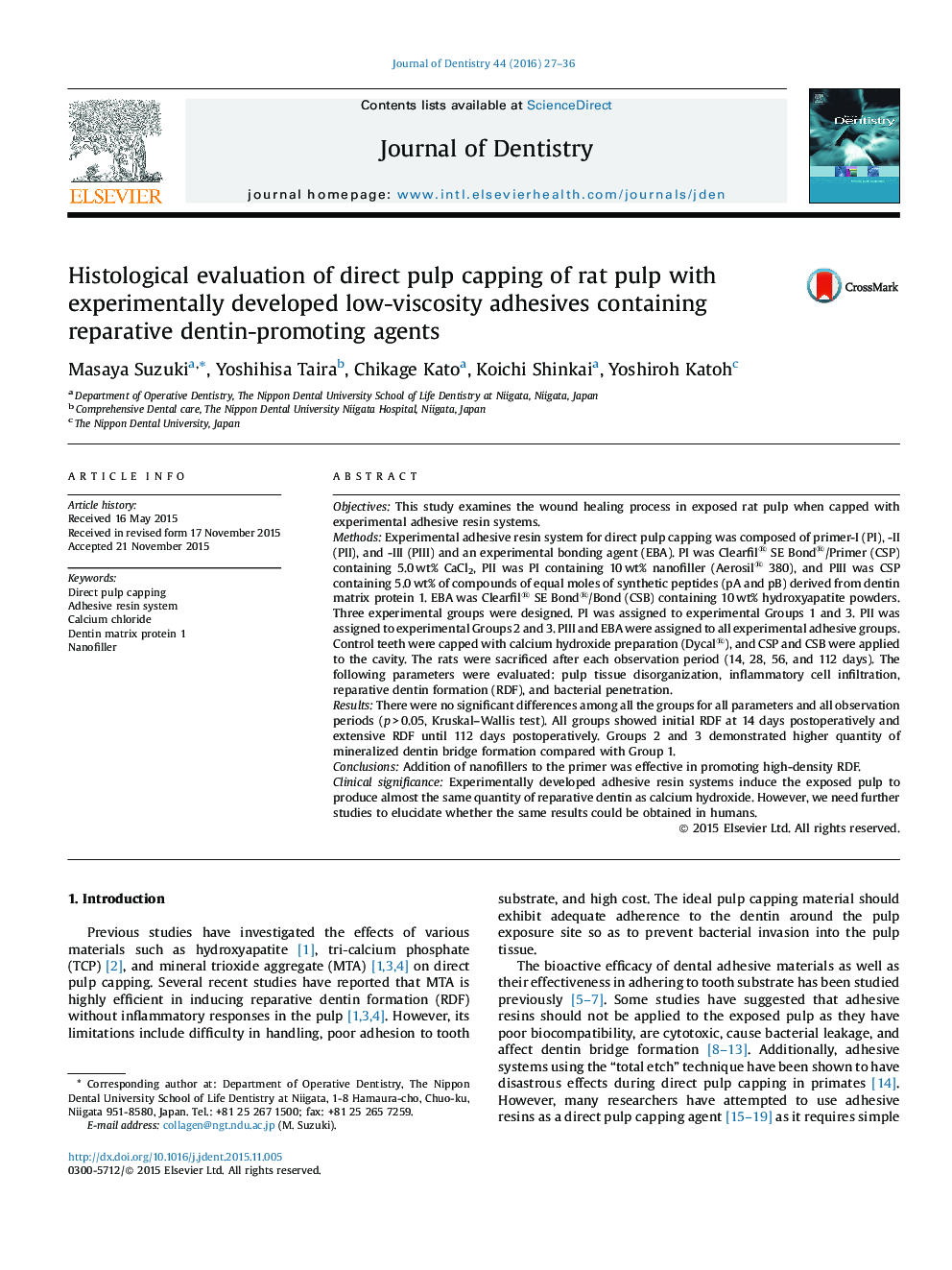| کد مقاله | کد نشریه | سال انتشار | مقاله انگلیسی | نسخه تمام متن |
|---|---|---|---|---|
| 3145032 | 1585485 | 2016 | 10 صفحه PDF | دانلود رایگان |
ObjectivesThis study examines the wound healing process in exposed rat pulp when capped with experimental adhesive resin systems.MethodsExperimental adhesive resin system for direct pulp capping was composed of primer-I (PI), -II (PII), and -III (PIII) and an experimental bonding agent (EBA). PI was Clearfil® SE Bond®/Primer (CSP) containing 5.0 wt% CaCl2, PII was PI containing 10 wt% nanofiller (Aerosil® 380), and PIII was CSP containing 5.0 wt% of compounds of equal moles of synthetic peptides (pA and pB) derived from dentin matrix protein 1. EBA was Clearfil® SE Bond®/Bond (CSB) containing 10 wt% hydroxyapatite powders. Three experimental groups were designed. PI was assigned to experimental Groups 1 and 3. PII was assigned to experimental Groups 2 and 3. PIII and EBA were assigned to all experimental adhesive groups. Control teeth were capped with calcium hydroxide preparation (Dycal®), and CSP and CSB were applied to the cavity. The rats were sacrificed after each observation period (14, 28, 56, and 112 days). The following parameters were evaluated: pulp tissue disorganization, inflammatory cell infiltration, reparative dentin formation (RDF), and bacterial penetration.ResultsThere were no significant differences among all the groups for all parameters and all observation periods (p > 0.05, Kruskal–Wallis test). All groups showed initial RDF at 14 days postoperatively and extensive RDF until 112 days postoperatively. Groups 2 and 3 demonstrated higher quantity of mineralized dentin bridge formation compared with Group 1.ConclusionsAddition of nanofillers to the primer was effective in promoting high-density RDF.Clinical significanceExperimentally developed adhesive resin systems induce the exposed pulp to produce almost the same quantity of reparative dentin as calcium hydroxide. However, we need further studies to elucidate whether the same results could be obtained in humans.
Journal: Journal of Dentistry - Volume 44, January 2016, Pages 27–36
